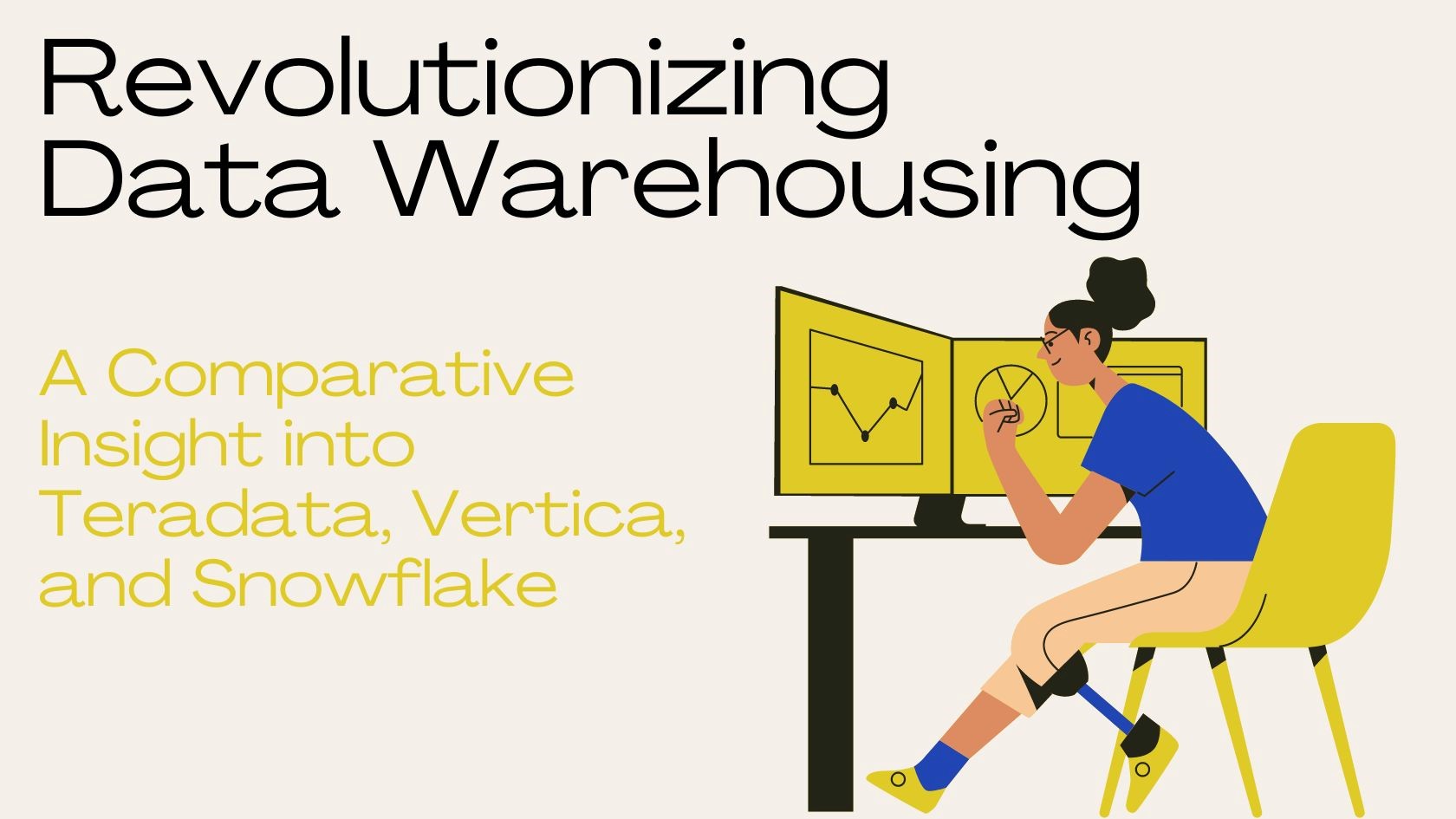Revolutionizing Data Warehousing: A Comparative Insight into Teradata, Vertica, and Snowflake
The rapid growth in data volume and variety has prompted organizations to adopt more advanced data warehousing solutions to handle the challenges of modern enterprise environments. Srikanth Gangarapu, with contributions from co-authors Vishnu Vardhan Reddy Chilukoori, Abhishek Vajpayee, and Rathish Mohan, provides a detailed analysis of three prominent data warehouse platforms: Teradata, Vertica, and Snowflake. This article delves into the key architectural features, performance capabilities, and migration strategies for each platform, offering a holistic perspective on choosing the right solution for enterprise needs.
The New Era of Data Warehousing
The digital transformation of organizations has heightened the need to manage complex, expanding data sets, making the choice of data warehouse platforms essential. An analysis of Teradata, Vertica, and Snowflake highlights their unique strengths. Teradata excels at managing large-scale enterprise workloads with its robust architecture. Vertica, with its columnar storage, delivers high-performance analytics, while Snowflake, as a cloud-native solution, offers unmatched flexibility and scalability. Each platform addresses different organizational requirements, making their selection a critical factor in optimizing data management strategies.
Teradata: The Powerhouse for Complex Workloads
Teradata’s architecture uses Massively Parallel Processing (MPP), with each node operating independently, ensuring scalability and efficiency for handling large data volumes. Its advanced workload management enables seamless execution of complex queries, delivering high performance. While Teradata offers robust enterprise-grade features, it is more costly than cloud-native options and requires significant management and optimization. Nonetheless, it remains a top choice for industries with mission-critical workloads and stringent security needs.
Vertica: Optimized for Analytical Excellence
Vertica’s architecture, built on columnar storage, excels in high-performance analytical workloads. Its advanced encoding and compression significantly boost query speed and reduce storage costs, making it ideal for processing large datasets efficiently. Vertica is particularly suited for organizations focused on data analysis and machine learning. However, its steep learning curve and smaller ecosystem may challenge teams without specialized database administrators. Despite this, Vertica’s precision in managing analytical queries makes it a strong choice for data-driven enterprises.
Snowflake: The Future of Cloud-Native Data Warehousing
Snowflake’s innovative architecture, which separates compute and storage, has made it a leading data warehousing solution. This design offers unmatched scalability and cost efficiency, allowing organizations to scale resources independently. Its standout data-sharing feature enables secure data exchange across clouds and regions without duplication. While Snowflake offers near-zero maintenance and simplified management, improper optimization may lead to higher costs due to its usage-based pricing. Despite this, its flexibility and cross-cloud capabilities make it ideal for organizations with evolving data needs.
Choosing the Right Platform: Key Considerations
When choosing a data warehouse platform, organizations must consider both current and future needs. Scalability is key, particularly for those managing rapid data growth. Teradata’s MPP architecture provides strong scalability for complex workloads, while Snowflake offers elastic scalability, enabling independent scaling of compute and storage. Performance is equally important; Vertica’s columnar storage excels at analytical queries, while Teradata is suited for enterprise-level workloads. Snowflake offers automatic performance optimization. Cost is another crucial factor—while Teradata may incur higher operational costs, Snowflake’s usage-based pricing can be cost-effective if managed efficiently.
Migration Strategies and Best Practices
For organizations migrating to a new data warehouse platform, a phased approach is essential. Before starting the migration, it is crucial to conduct a thorough assessment of the current data landscape, including workload characteristics, data volumes, and compliance requirements. Migrating from legacy systems like Teradata to cloud-native platforms such as Snowflake requires careful planning, especially regarding data governance and performance benchmarking. A phased migration, beginning with less critical workloads, minimizes disruption and provides an opportunity to gradually optimize the new platform’s features.
In conclusion, Srikanth Gangarapu’s comparative analysis of Teradata, Vertica, and Snowflake highlights the strengths and trade-offs of each platform, providing organizations with the insights needed to make informed decisions. As data continues to grow in importance, the choice of a data warehouse platform will significantly impact an organization’s ability to leverage its data assets. Whether prioritizing scalability, performance, or cloud-native flexibility, understanding the unique capabilities of each platform will be critical to driving future growth and innovation. Gangarapu’s in-depth evaluation serves as a guide for data professionals navigating this evolving landscape.
